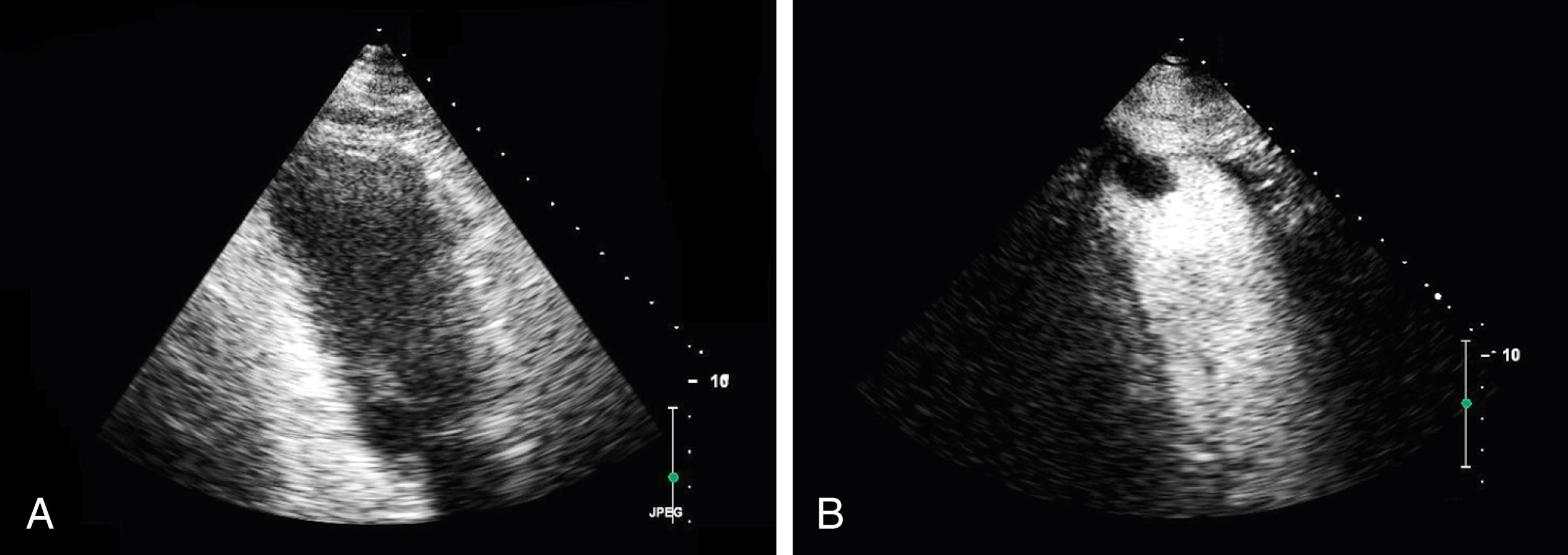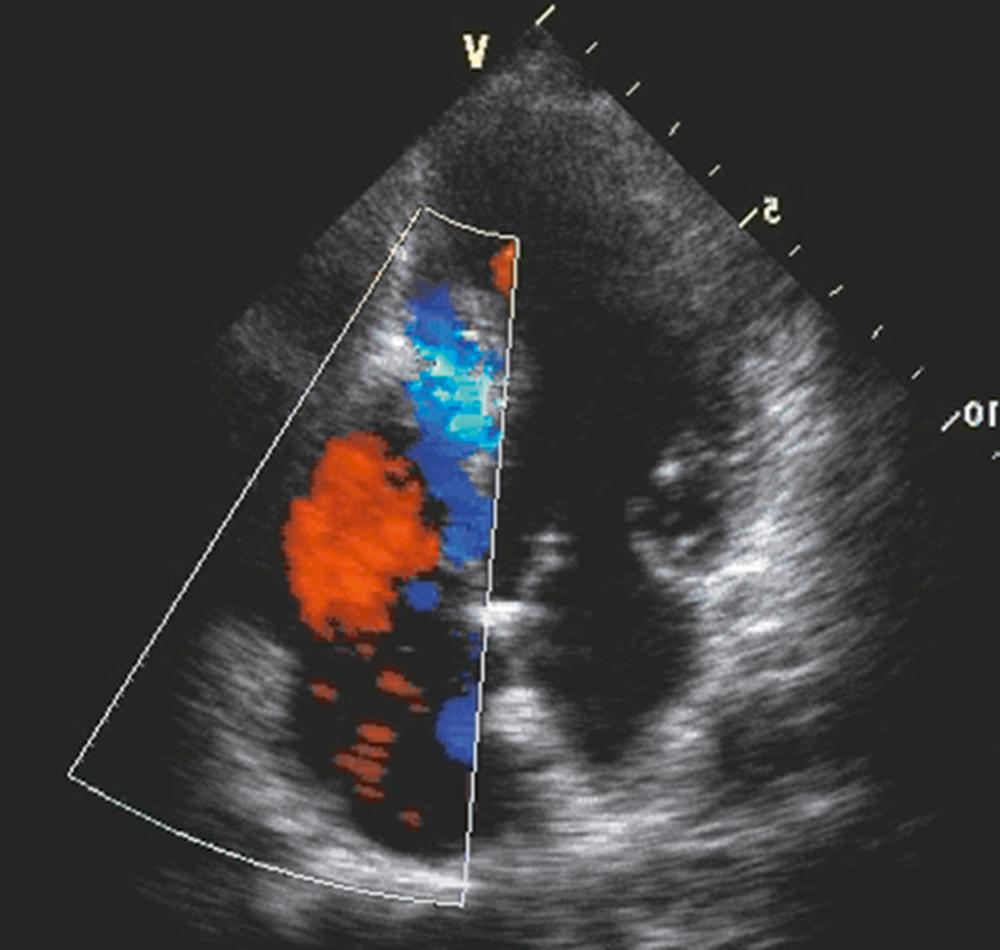Physical Address
304 North Cardinal St.
Dorchester Center, MA 02124
Patients who have had an acute myocardial infarction (MI) are subject to a broad range of potential complications, some of which are life threatening. These complications range from cardiogenic shock caused by the loss of a critical mass of myocardium to various mechanical complications, such as the development of a left ventricular (LV) thrombus, ventricular septal rupture, free-wall rupture, papillary muscle rupture, dynamic LV outflow tract obstruction, and right ventricular infarction. Echocardiography is a valuable, noninvasive imaging tool that can be used to rapidly assess structural and hemodynamic factors and identify complications in the setting of an acute MI.
Previous studies have demonstrated that 1.5% to 3.6% of acute myocardial infarctions (MIs) are complicated by systemic embolism, , and left ventricular (LV) mural thrombus is most often the responsible culprit. The risk of developing LV thrombus varies with location and size of the MI. A review of the GISSI-3 database revealed that 5.1% of patients treated with fibrinolytic therapy for an acute MI were diagnosed with an LV thrombus by predischarge transthoracic echocardiography (TTE). Patients who sustained an anterior MI were at a higher risk of developing LV thrombosis (11.5% vs 2.3% of patients with MIs at other locations). Similarly, in patients treated with percutaneous coronary intervention and dual antiplatelet therapy for an acute anterior MI, 10% and 15% were diagnosed with an LV thrombus by serial echocardiography at 1 week and 3 months, respectively.
LV thrombosis in the setting of an acute MI is typically seen at the LV apex, which is often akinetic as a result of the infarction. Two-dimensional TTE is the most frequently used imaging modality for the detection of LV thrombus; the apical view is the best window to visualize an apical thrombus ( Fig. 43.1A and ![]() ). The echocardiographic appearance of an apical thrombus is characterized by a nonhomogeneous echodensity with a margin distinct from the underlying akinetic or dyskinetic LV apex. This characteristic appearance may allow differentiation of a true LV thrombus from chordae tendineae or artifacts. A protruding configuration and free mobility of LV thrombi are predictors of systemic embolization.
). The echocardiographic appearance of an apical thrombus is characterized by a nonhomogeneous echodensity with a margin distinct from the underlying akinetic or dyskinetic LV apex. This characteristic appearance may allow differentiation of a true LV thrombus from chordae tendineae or artifacts. A protruding configuration and free mobility of LV thrombi are predictors of systemic embolization.

Video 43.1. Apical views of noncontrast (A) and contrast (B) transthoracic echocardiography. Note the anteroapical regional wall motion abnormalities and the demonstration of a filling defect at the left ventricular apex by contrast echocardiography (right), consistent with a left ventricular apical thrombus measuring 1.5 cm × 2.3 cm.
Contrast echocardiography is particularly helpful in patients with suboptimal acoustic windows and in those with prominent LV apical muscle bands or trabeculations, which can confound the recognition of a thrombus ( Fig. 43.1B and ![]() ). Multiple studies have demonstrated contrast echocardiography’s superior sensitivity and accuracy in detecting an LV thrombus compared with noncontrast echocardiography. , For instance, in one study that examined the use of contrast in nondiagnostic transthoracic echocardiograms for the purpose of detecting LV thrombus, 90% of these studies became definitive in establishing whether an LV thrombus was present after the use of contrast. Systemic anticoagulation therapy is recommended in patients who are diagnosed with an LV thrombus after an acute MI to reduce the risk of embolization.
). Multiple studies have demonstrated contrast echocardiography’s superior sensitivity and accuracy in detecting an LV thrombus compared with noncontrast echocardiography. , For instance, in one study that examined the use of contrast in nondiagnostic transthoracic echocardiograms for the purpose of detecting LV thrombus, 90% of these studies became definitive in establishing whether an LV thrombus was present after the use of contrast. Systemic anticoagulation therapy is recommended in patients who are diagnosed with an LV thrombus after an acute MI to reduce the risk of embolization.
Rupture of the ventricular septum after an acute MI is rather uncommon, occurring in fewer than 1% of total infarcts. However, the incidence of postinfarction ventricular septal ruptures (VSRs) is higher (2%–5%) in patients with cardiogenic shock (3.9% in the SHOCK (Should We Emergently Revascularize Occluded Coronaries for Cardiogenic Shock) Trial Registry and randomized SHOCK Trial). The typical clinical presentation is the development of a new holosystolic murmur and a precordial thrill along with abrupt and progressive hemodynamic deterioration. VSRs can occur as a complication of both anterior and nonanterior MIs. Apical VSRs are more commonly associated with an anterior MI, whereas VSRs associated with an inferior MI often occur in the posterobasal region of the ventricular septum. Echocardiographic examination therefore must thoroughly evaluate both of these regions of the ventricular septum ( Fig. 43.2 and ![]() ). Although visualization of the defect may be difficult, a postinfarction VSR should be suspected in the presence of severe wall motional abnormalities of the distal ventricular septum. Color Doppler imaging typically demonstrates a shunt from the LV to the right ventricle (RV). Peak flow velocity across the site of rupture measured by continuous-wave (CW) Doppler interrogation corresponds to the pressure gradient between the LV and RV and can therefore be used to estimate RV systolic pressure (RV systolic pressure = systolic blood pressure − pressure gradient between LV and RV; in the absence of LV outflow tract or aortic valve obstruction, the systolic blood pressure would equal the LV systolic pressure). In addition, CW Doppler assessment may reveal a nearly continuous shunt through the VSR except during early diastole. Pulsed-wave and CW Doppler interrogations are exceedingly sensitive in the localization of postinfarction VSRs. This diastolic left-to-right shunt is secondary to an elevated LV diastolic pressure in the setting of an acute or recent MI. It is also important to note that the magnitude of the left-to-right shunt and the intensity of the systolic murmur are inversely proportional to the size of the infarct and directly related to residual LV systolic function.
). Although visualization of the defect may be difficult, a postinfarction VSR should be suspected in the presence of severe wall motional abnormalities of the distal ventricular septum. Color Doppler imaging typically demonstrates a shunt from the LV to the right ventricle (RV). Peak flow velocity across the site of rupture measured by continuous-wave (CW) Doppler interrogation corresponds to the pressure gradient between the LV and RV and can therefore be used to estimate RV systolic pressure (RV systolic pressure = systolic blood pressure − pressure gradient between LV and RV; in the absence of LV outflow tract or aortic valve obstruction, the systolic blood pressure would equal the LV systolic pressure). In addition, CW Doppler assessment may reveal a nearly continuous shunt through the VSR except during early diastole. Pulsed-wave and CW Doppler interrogations are exceedingly sensitive in the localization of postinfarction VSRs. This diastolic left-to-right shunt is secondary to an elevated LV diastolic pressure in the setting of an acute or recent MI. It is also important to note that the magnitude of the left-to-right shunt and the intensity of the systolic murmur are inversely proportional to the size of the infarct and directly related to residual LV systolic function.

Video 43.2. Transthoracic echocardiogram demonstrates the cause of a loud systolic murmur after myocardial infarction: a ventricular septal rupture with left-to-right shunting.
Become a Clinical Tree membership for Full access and enjoy Unlimited articles
If you are a member. Log in here